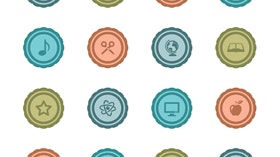Homepage
•
Learning Library
•
Blog
•
5 steps to get started with digital badging [VIDEO]
Expand breadcrumbs
Expand breadcrumbs
- Learning Library
- Blog
- 5 steps to get started with digital badging [VIDEO]
- Homepage
- •
- Learning Library
- •
- Blog
- •
- 5 steps to get started with digital badging [VIDEO]
5 steps to get started with digital badging [VIDEO]
By Team ISTE
March 30, 2017








